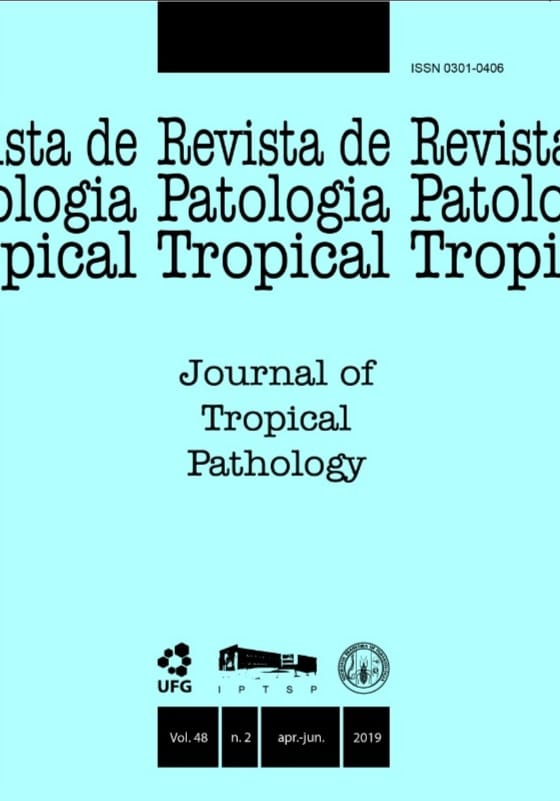FREQUENCY OF ENTEROPARASITOSES IN PRESCHOOL CHILDREN ATTENDING DAYCARE CENTERS: A SURVEY APPLYING PARASITOLOGICAL AND IMMUNOLOGICAL METHODS
DOI:
https://doi.org/10.5216/rpt.v48i2.58571Abstract
The present study evaluated the frequency of intestinal parasitoses in children in public day care centers applying parasitological and immunological diagnostic methods. Fecal samples from 121 children from six public daycare centers were analyzed using parasitological techniques. Epidemiological data were obtained through a questionnaire, where parents and / or guardians were asked, for instance, whether the children had contact with soil, ate raw food, such as vegetables or raw or undercooked meat, normally walked around barefoot or had contact with animals. Fecal samples from 82 children were also tested for Giardia intestinalis and Cryptosporidium sp. coproantigen using the enzyme-linked immunosorbent assay (ELISA) which was also used for Entamoeba coproantigen detection only in samples that tested positive for the parasite by parasitological stool exam/optical microscopy. Intestinal parasite infection was noted in 23.1% (28/121) of the children. The most frequent parasite was Giardia intestinalis (13.2%), followed by Entamoeba coli (5.8%), Blastocystis spp. (1.7%), Endolimax nana (1.7%), Enterobius vermicularis (1.7%), Cystoisospora belli (0.8%),
Entamoeba histolytica/E. dispar complex (0.8%), and Ascaris lumbricoides (0.8%). Positivity for parasite infection using parasitological stool exams was significantly associated with age groups, with a higher frequency in 4 to 6 year old children (p=0.03). No association or significant variations were noted in the prevalence of intestinal parasites in relation to the epidemiological variables studied. All samples were negative for Cryptosporidium sp. and Entamoeba histolytica detected by immunological testing, and 17.1% (14/82) children tested positive for Giardia intestinalis, although using parasitological exam/optical microscopy, only 14.6% (12/82) tested positive. The high incidence of intestinal parasites, especially protozoans, suggests probable interpersonal transmission among the children, environmental contamination, or even contaminated food/water intake. Thus, consolidation of preventive measures and efficient diagnostic resources as well as control of intestinal parasites and patient treatment are of utmost importance.
Downloads
Downloads
Published
How to Cite
Issue
Section
License
The manuscript submission must be accompanied by a letter signed by all authors stating the full name and email address, confirming that the material has not been published or is under consideration for publication elsewhere, and agreeing to transfer copyright in all media and formats for Journal of Tropical Pathology. The authors will not be paid for published articles. They are solely responsible for the content of those articles, even if the Editor holds the right to adjust them to the norms of the journal.
The reviewers will not be paid for the peer review process.

